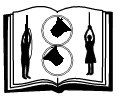
|
Ringing History Hub |

|
Ringing History Hub |

|
This analysis shows the ringers who are associated with a particular ringer and those who are subsequently associated with them. Two levels of seperation are represented. Less-► |
The source data in this demonstration is taken from work to index the "Church Bells" periodical which contained many references to ringing performances. Most of these were contemporary but details of quite a few old peal boards were also published. The result is a gradually increasing dataset of performances and ringers up to the 1870's.
The majority of ringing links represent peals with a few of general ringing and some band membership lists.
The analysis is done using AnyChart's Network Graph. This initial page uses a .json data file where the Nodes (dots in the graph) are represented in one list and the Edges (the joining lines in the graph) are represented in another. The network graph is generated using Javascript. The transformation from index to .json has been done using various tools. A single level of association yields only those ringers who rang with G Mash. That is only 59 ringers. The second level includes all the other ringers who rang with the 59. That finds an additional 2,388 ringers. So two levels is plenty. Another level will fill in the gaps so you end up with every documented ringer's name.
The next stage is to generate a much larger data source, transform that into MySQL tables and dynamically generate the network data on the php page. The user will be able to pick a ringer to start the analysis from the People Search. This will to use coding similar to that used to generate Google maps.
Further design details will be to centre the target ringer in the graph and to add the most frequent location as labels to the edges. Also, weighting of the edges according to the number of associations while scaling those lines when the most detailed zoom levels are selected. The First Level nodes are to be coloured differently or use different characters to the Second Level.
.|
Copyright © 2003-2025 Central Council of Church Bellringers |
Log in | Site map |